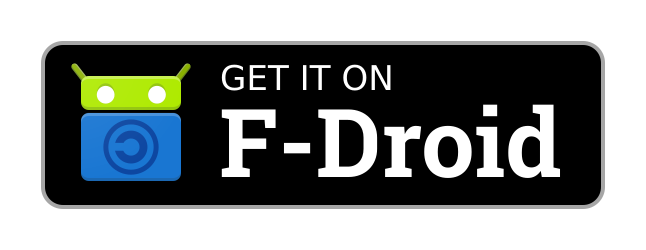Quillpad is fully free and open-source. It will never show you ads, ask you for unnecessary permissions or upload your notes anywhere without you knowing.
Take beautiful markdown notes whenever you feel inspired. Place them in notebooks and tag them accordingly. Stay organized by making task lists, set reminders and keep everything in one place by attaching related files.
Join the conversation at Matrix or Gitter
Quillpad is a fork of an original app called Quillnote. The development stopped on the original app and PR backlogs were not cleared up. The community showed much interest in the app for continued development and so this fork was created. https://github.com/msoultanidis/quillnote/issues/177 https://github.com/msoultanidis/quillnote/issues/209


With Quillpad, you can:
- Take notes with Markdown support
- Make task lists
- Pin your favorite notes to the top
- Hide notes you do not want others to see
- Set reminders for events you do not want to miss
- Add voice recordings and other file attachments
- Group related notes in notebooks
- Add tags to notes
- Archive notes you want out of your way
- Search through notes
- Sync with Nextcloud (experimental, requires the Nextcloud Notes app installed on the Nextcloud server used for syncing)
- Backup your notes to a zip file which you can restore at a later time
- Toggle between Light and Dark mode
- Choose between multiple color schemes
Backups from Notally can be converted into Quillpad compatible backups using this python script
Notes from Google Keep can be converted to Quillpad compatible backups using gk2qp.
Follow these steps to add a new translation:
- Create an account on Github or use your Github account if you have one that already exists.
- Create a new folder under quillpad/app/src/main/res named values-LANGCODE (e.g the Arabic folder will be named values-ar).
- Copy the file quillpad/app/src/main/res/values/strings.xml and put it in the values-LANGCODE folder.
- Now you can translate the strings.xml file in your language value folder.
The major features that are currently planned for this app are listed below in a series of milestones. In additional to these major features, there will be bug fixes and other enhancements will be added as we go.
- Store the notes as markdown files in the device.
- If the folder chosen is under a cloud storage provider, Android will sync the markdown files with the respective cloud. For e.g. Google Drive, Dropbox and even Nextcloud. Syncing this way to the cloud does not deal with the Nextcloud API.
- This will be the easiest way for users to sync the notes without having to self-host a NextCloud instance.
- Update to the latest version of Android API and Dependency Libraries.
- Introduce Compose and Kotlin multiplatform. The main app views like the list of notes, edit view and the todo list view will be migrated to Compose.
The app uses the current XML based UI and a bunch of Android based libraries.
- Migrating the UI to compose. These libraries are Android UI and would need to be replaced with Compose Multiplatform libraries. The entire UI will be re-written in Compose.
androidx.appcompat:appcompatandroidx.recyclerview:recyclerviewandroidx.fragment:fragment-ktxandroidx.palette:palette-ktxandroidx.media:mediaandroidx.swiperefreshlayout:swiperefreshlayoutandroidx.navigation:navigation-ui-ktx
- Hilt + Dagger will need to be replaced with koin. Given that the dependency injection is already deeply integrated with the UI, this will be a major change.
- Room Database will need to be replaced with SQLDelight. This is a major change as the entire database schema will need to be re-written. All the migrations will need to be re-written and tested if an earlier version of the app with Room DB be able to newer versions with SQLDelight.
- Markwon will need to be replaced with Compose compatible Markdown library. Given that the app is a markdown editor, this is a major change and I don't know if there is a Compose and Multiplatform compatible markdown library.
- Retrofit, Security-crypto, ExoPlayer, and other libraries will need to be replaced with Multiplatform compatible libraries.
Given the extensive changes required for the migration to Compose Multiplatform, it would be more practical to start a new project. This approach allows us to build the app with multiplatform compatibility in mind from the ground up, rather than trying to retrofit it into an existing Android-specific codebase.
Furthermore, this approach ensures that the current app remains stable and usable for users during the migration process. We can gradually port features from the old app to the new one.
- Introduce desktop app. With the main views available in compose, try making a desktop app with help of Compose for desktop.
- Try an iOS version since the kotlin multiplatform code does the heavy lifting of notes management and syncing. Leverage the same storage API equivalent in iOS.
- Now we have the ability to sync notes using cloud providers like
Google Drive and DropboxpCloud. The cloud providers may to go through the notes and may index them and may profile the user. This is the primary reason for the encryption feature. Which means, the notes won't be staying as markdown files, and cannot be edited by other text editors. - Encryption will be optional. The user can switch between having the notes encrypted vs stored them as plain markdown files.


